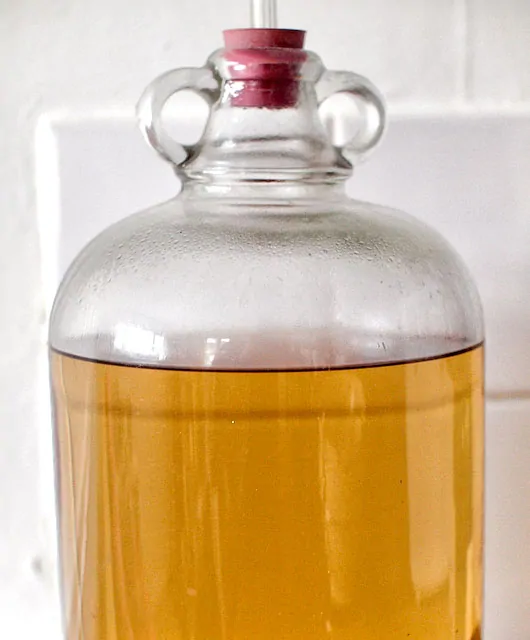Racking and Clearing A Wine

The wine may sit in a carboy or demijohn for a number of months as the yeast finish their tasks and slowly begin to fall to the bottom of the demijohn. It is this point we rack the wine to a new clean container for further clearing.
To make a good wine at home it needs to not only taste good but also look good. Give a guest or friend a glass of cloudy wine and they will have already made assumptions about it before it even touches their lips. This is why we need to take the time to allow the wine to clear and removing the wine from any debris or sediment after fermentation has finished.
Racking A Wine
When a wine is fermenting there will be a lot of yeast in suspension as well as other debris from the fruit as well as insoluble salts and compounds. It is this debris that gives our wine a cloudy appearance during fermentation.
As fermentation slows and comes to an end those yeast cells will begin to die and slowly sink to the bottom of the demijohn or carboy. Over the period of a month or two a layer of these particles and dead yeast cells will cover the bottom of the demijohn. When we see this happen we need to move the wine off the sediment, using a syphon to avoid disturbing the sediment, into a clean sanitised demijohn or carboy to continue clearing.
This racking process is usually done twice during the time the wine is in a demijohn but there are no hard and fast rules. Generally after fermentation is finished you should see a deposit of sediment (called lees) within a couple of weeks and the wine will be visibly clearer then during the height of fermentation. This is a good time to rack the wine for the first time, the second time will usually be a month to 45 days later, when another deposit is left and the wine is pretty much clear.
Every Wine Is Different
I have just said it’s usual to rack twice before bottling however some wines may be different and take longer to clear for one reason or another as a general rule rack the wine every 2 – 3 months as long as there is a fresh layer of sediment. Leave the wine on the lees for longer than 3 months and you risk the wine developing off flavours. If you see a layer of sediment then syphon the wine off it.
Achieving a Clear Wine
Once a wine has completely cleared and all signs of fermentation are long gone then it’s time to bottle the wine. At this point some wine makers stabilise the wine using potassium sorbate which will stop any kind of fermentation once bottled. It’s not strictly necessary but is something we’ll look at in the future.
Usually a clear wine will be achieved after a few months and racking it a few times into clean demijohns or carboys. On some occasions however you may have a wine that is stubborn to clear so you may choose to use a fining agent to speed the process along. A fining agent is a product designed to clear a wine, some wine makers use them routinely but they aren’t necessary on most occasions. There are various products available from your home brew supplier, if you do choose to use a fining agent just follow the instruction on the pack. I will write in further detail on different types of fining here soon.
Then, it’s on to bottling.
